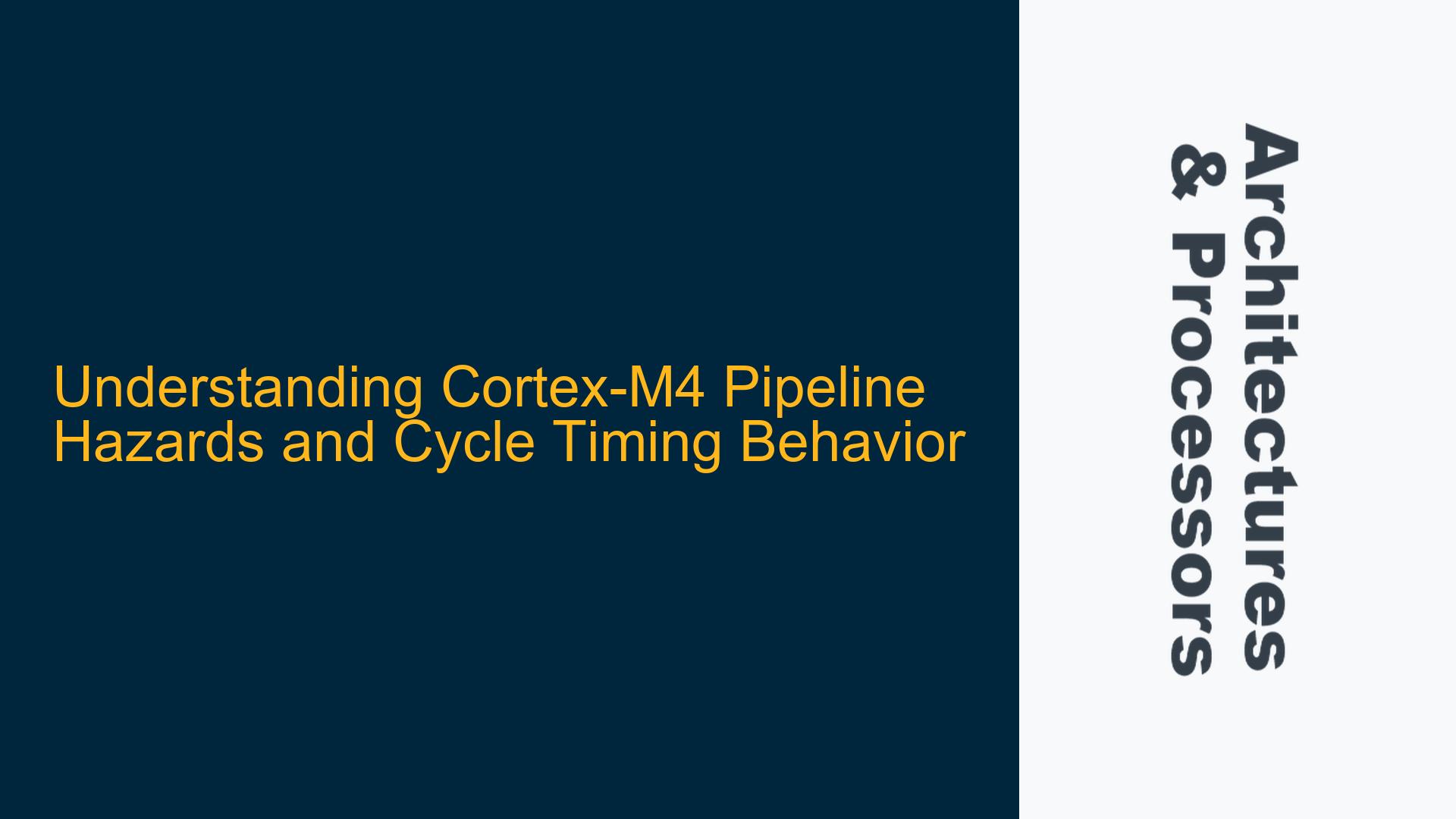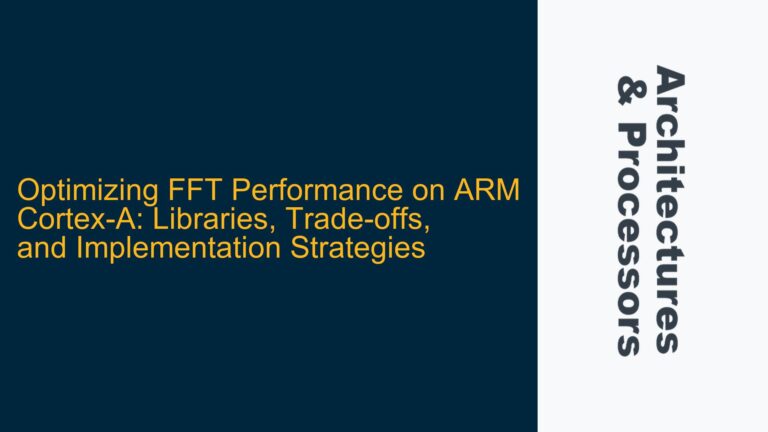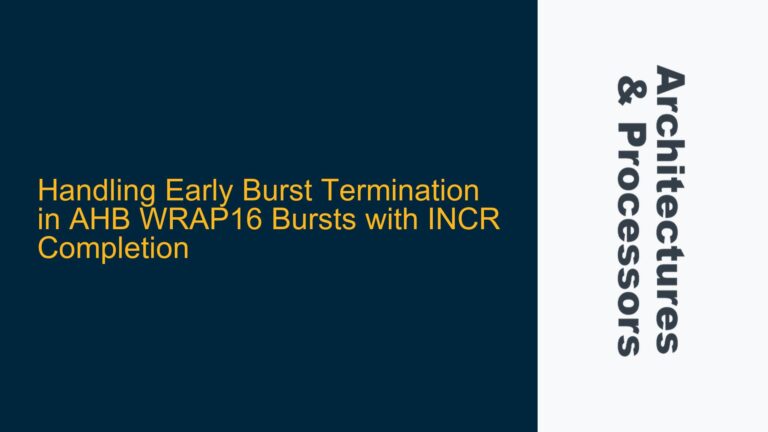Cortex-M4 Pipeline Behavior and Data Hazard Misconceptions
The Cortex-M4 processor, based on the ARMv7-M architecture, employs a simple 3-stage pipeline consisting of Fetch, Decode, and Execute stages. This pipeline design is optimized for low-power embedded applications, where simplicity and deterministic behavior are prioritized over complex out-of-order execution or deep pipelining. However, this simplicity often leads to misconceptions about data hazards and their impact on performance.
In the context of the provided code examples, the expectation was that a data hazard would occur in Program-1 (LDR R5,[R6,#offset] followed by ADD R5,R8,R2) due to the dependency on register R5. However, no performance difference was observed compared to Program-2 (LDR R5,[R6,#offset] followed by ADD R3,R8,R2), where R5 is not used in the subsequent ADD instruction. This behavior can be attributed to the Cortex-M4’s pipeline design, which inherently stalls the pipeline when a load instruction is executed, regardless of whether the loaded data is immediately used by the next instruction.
The Cortex-M4 pipeline does not support forwarding or bypassing mechanisms commonly found in more complex architectures like the Cortex-A series. As a result, the pipeline must wait for the load operation to complete before proceeding with the next instruction. This means that even if the ADD instruction in Program-1 does not use the result of the LDR instruction, the pipeline will still stall until the LDR completes. This explains why there is no difference in cycle count or current consumption between the two programs.
Additionally, the Cortex-M4’s pipeline is designed to handle single-cycle execution for most instructions, with load operations typically taking multiple cycles depending on the memory system’s latency. The observed cycle counts for the LDR instruction with different offsets (0, 1, 2, 3) reflect the memory access patterns and alignment requirements. For example, an offset of 1 or 3 may result in unaligned memory accesses, which can increase the cycle count due to additional memory bus transactions.
Pipeline Stalls and Load-Use Hazards in Cortex-M4
The Cortex-M4’s pipeline design inherently avoids load-use hazards by stalling the pipeline until the load operation completes. This behavior is a direct consequence of the processor’s simplicity and lack of forwarding logic. In more complex architectures, forwarding paths would allow the result of a load operation to be immediately available to the next instruction, reducing or eliminating stalls. However, in the Cortex-M4, the pipeline must wait for the load operation to complete, regardless of whether the next instruction depends on the loaded data.
This design choice simplifies the hardware but can lead to inefficiencies in certain scenarios. For example, if a series of load instructions are executed back-to-back, the pipeline will stall for each load, resulting in a cumulative performance penalty. However, this penalty is often acceptable in embedded systems where deterministic behavior and low power consumption are more critical than raw performance.
To observe a true hazard in the Cortex-M4, one must look beyond simple load-use scenarios. For instance, back-to-back Multiply-Accumulate (MAC) operations, such as UMLAL, can create hazards if the result of the first operation is used as an input to the second operation. In such cases, the pipeline must stall to ensure correct results, as the accumulator register cannot be updated and read in the same cycle.
The lack of observable differences in cycle count and current consumption in the provided examples is a direct result of the Cortex-M4’s pipeline design. The pipeline stalls for load operations, and the absence of forwarding logic means that dependent instructions will always wait for the load to complete. This behavior is consistent and predictable, making it easier to reason about performance in real-time systems.
Calculating Cycle Counts for Instruction Sequences in Cortex-M4
Determining the exact cycle count for a sequence of instructions on the Cortex-M4 requires a detailed understanding of the processor’s pipeline behavior, memory system, and instruction dependencies. While the Cortex-M4 Technical Reference Manual provides cycle counts for individual instructions, calculating the cycle count for a sequence of instructions involves considering several factors, including pipeline stalls, memory access latency, and instruction dependencies.
For example, in the provided code sequences, the LDR instruction’s cycle count varies depending on the offset due to memory alignment and access patterns. An offset of 0 results in a single-cycle LDR, while offsets of 1 or 3 may result in additional cycles due to unaligned accesses. The ADD instruction, on the other hand, typically executes in a single cycle, as it does not involve memory access.
When combining LDR and ADD instructions, the total cycle count is influenced by the pipeline stall caused by the LDR instruction. Even if the ADD instruction does not depend on the LDR result, the pipeline must wait for the LDR to complete before proceeding with the ADD. This results in a cumulative cycle count that reflects both the LDR’s memory access latency and the ADD’s execution time.
To accurately calculate cycle counts for instruction sequences, one must consider the following:
- Pipeline Stalls: Identify instructions that cause pipeline stalls, such as load operations, and account for the additional cycles required to complete these operations.
- Memory Access Patterns: Consider the impact of memory alignment and access patterns on cycle counts, particularly for load and store instructions.
- Instruction Dependencies: Analyze dependencies between instructions to determine if pipeline stalls or hazards will occur, even if the processor’s design inherently avoids certain types of hazards.
While there is no universal formula for calculating cycle counts for arbitrary instruction sequences, the Cortex-M4 Technical Reference Manual provides a solid foundation for understanding individual instruction timings. By combining this knowledge with an understanding of the processor’s pipeline behavior, one can estimate cycle counts for specific sequences and optimize code for performance.
In conclusion, the Cortex-M4’s simple pipeline design and deterministic behavior make it well-suited for embedded applications where predictability and low power consumption are critical. However, this simplicity also means that certain performance optimizations, such as forwarding and out-of-order execution, are not available. By understanding the processor’s pipeline behavior and memory system, developers can write efficient code and accurately predict performance characteristics.






